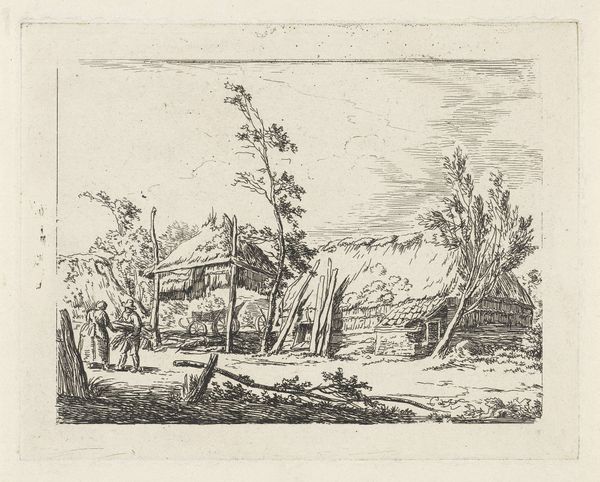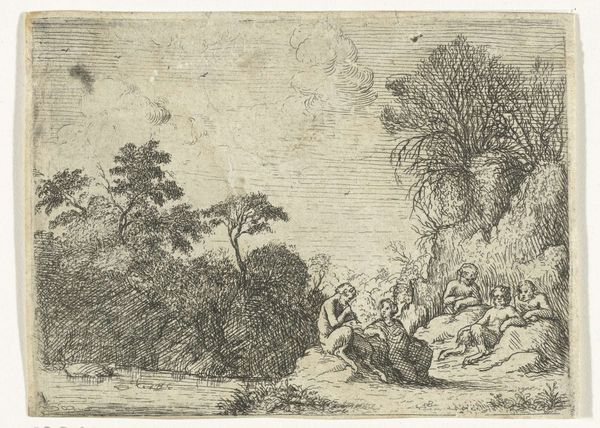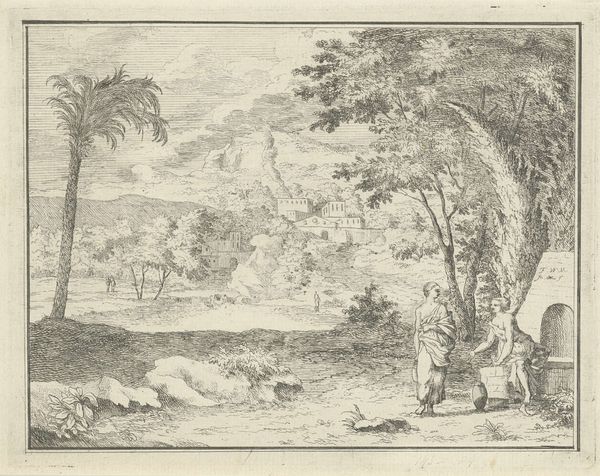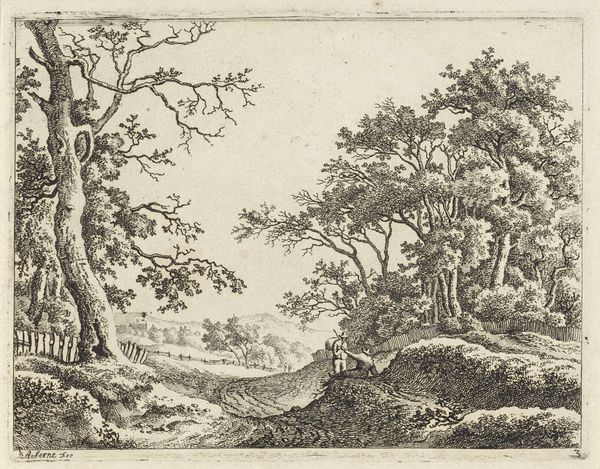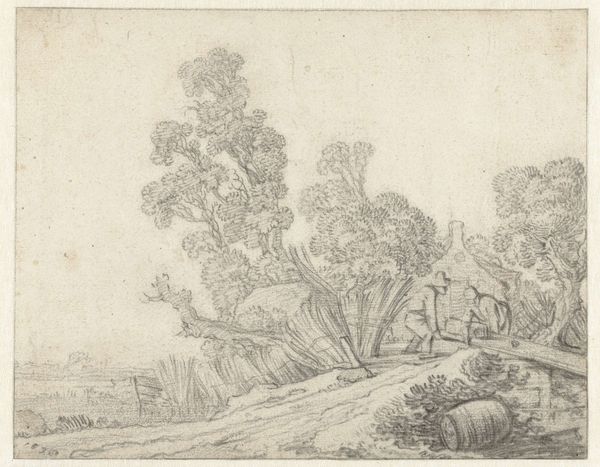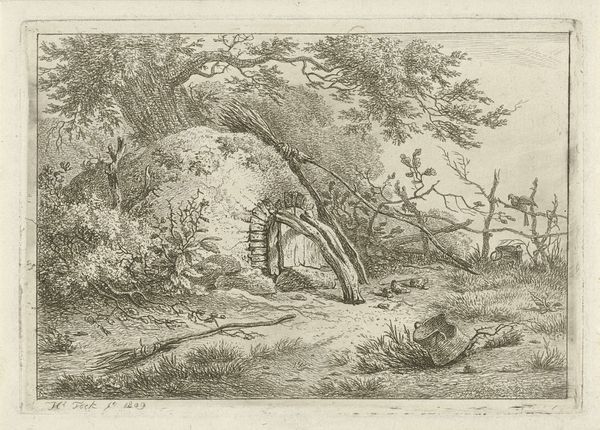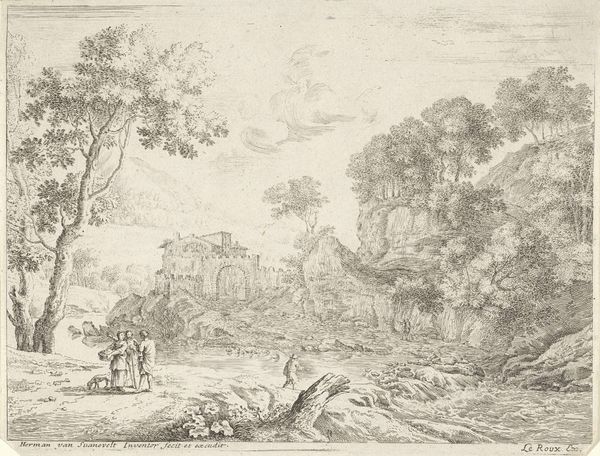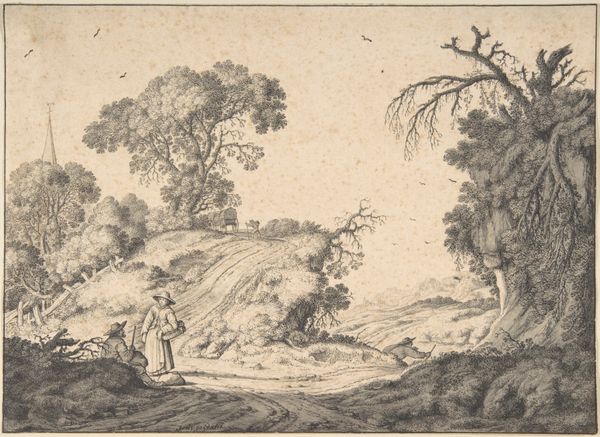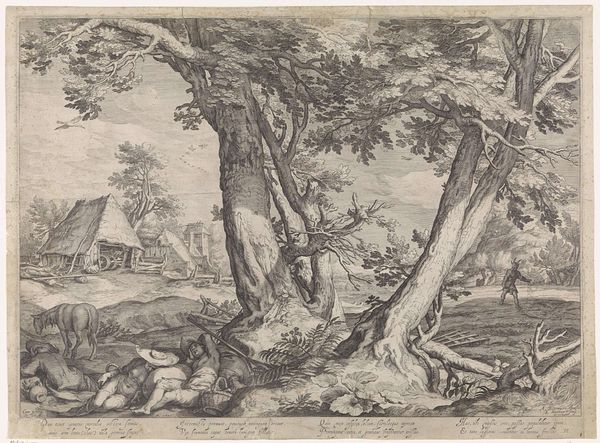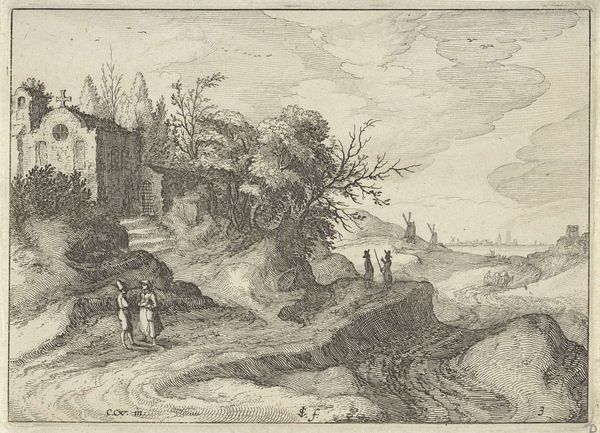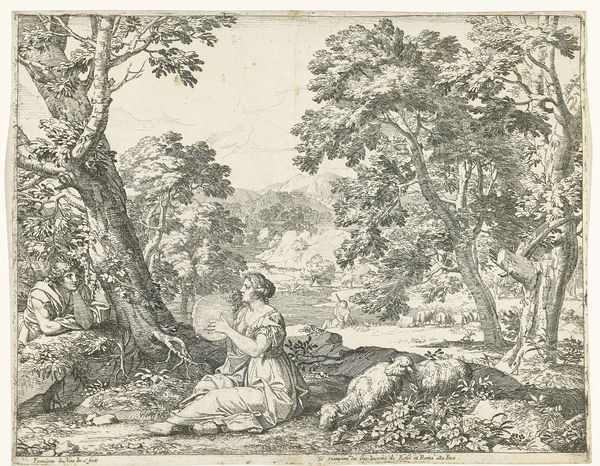
etching, engraving
#
dutch-golden-age
#
pen sketch
#
etching
#
landscape
#
engraving
#
realism
Dimensions: height 171 mm, width 251 mm
Copyright: Rijks Museum: Open Domain
Curator: "Landschap met vervallen boerderijen," or "Landscape with Dilapidated Farmhouses," created by Gerrit de Heer in 1634. This print, likely an etching or engraving, captures a scene of rural decay. What strikes you initially about this image? Editor: A poignant sense of neglect. It’s not romantic decay, you know? But a real kind of melancholy, as if these homes hold secrets or whispered stories. They are so still... and still standing! Curator: De Heer's choice of etching and engraving is important here. The linear quality allowed him to detail the textures of the collapsing structures. This attention to detail points towards a fascination with the economic realities of the time. What were the resources at hand, what kind of labor resulted in their degradation, how did weather interact with these built environments... Editor: Right, there is definitely that historical weight present. And you know, the pen sketch feeling this medium has. All of the crosshatching looks kind of frantic, it speaks to the human toll on landscape as it almost fights the subject of decay and its beauty with the raw urgency of marks, it mirrors perfectly what it represents! Like sketching something as it rots right in front of your very eyes. Curator: I completely agree. One sees Dutch realism emerging, not from some objective stance, but intimately tied up in the act of observation and material documentation. There’s a rawness here in de Heer's decision to feature buildings marked for the elements—to create such marks within his artistic practice! The etching highlights a society transforming and its direct correlation to working, and living from landscape in pre-industrial Europe. Editor: Yeah... Looking at it I'm now sensing something about fleetingness too; like how de Heer immortalizes the ephemeral nature of life within an ordinary, easily disregarded frame. Makes you contemplate existence in terms of impermanence or, perhaps more accurately, the continuous cycling of degradation, as intrinsic. Curator: Yes! This interplay between observation, representation, and its larger context. We consider then, not just the technique involved, but de Heer’s artistic output engaging the broader conversations around agrarian life of the seventeenth century. It definitely opens questions that still concern us to this day: sustainability, labor, human action to a system bigger than us... Editor: Beautiful, like a memento mori of humble dwellings—simple. Let's leave them in peace now. Curator: Indeed. There's so much complexity captured within the simplest of etchings. It’s rather sobering.
Comments
No comments
Be the first to comment and join the conversation on the ultimate creative platform.
